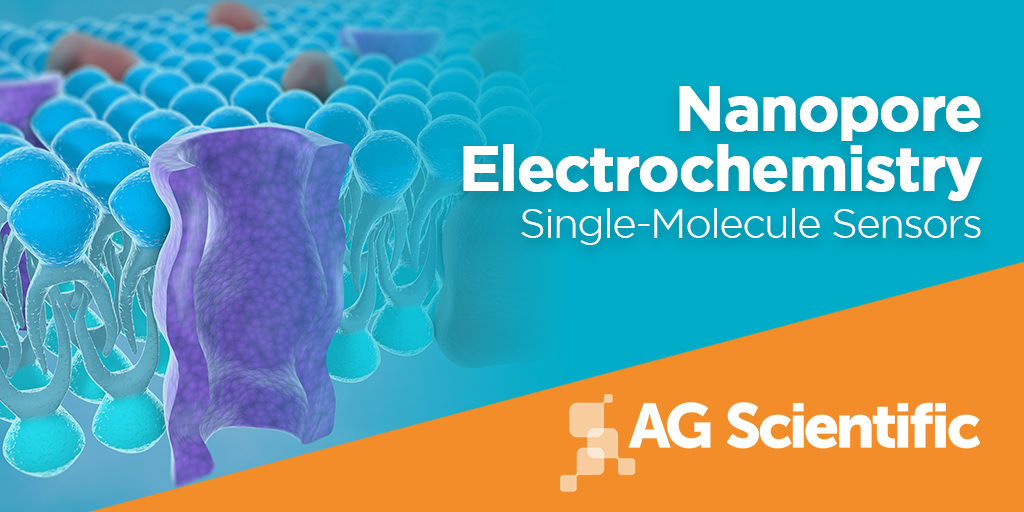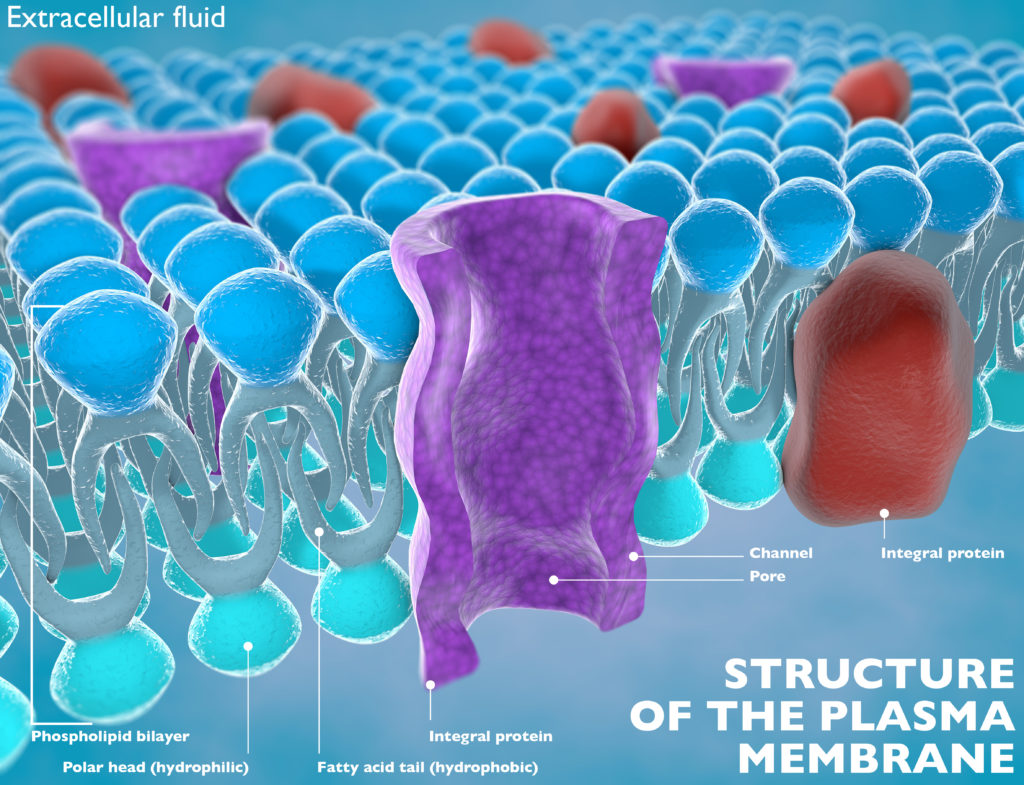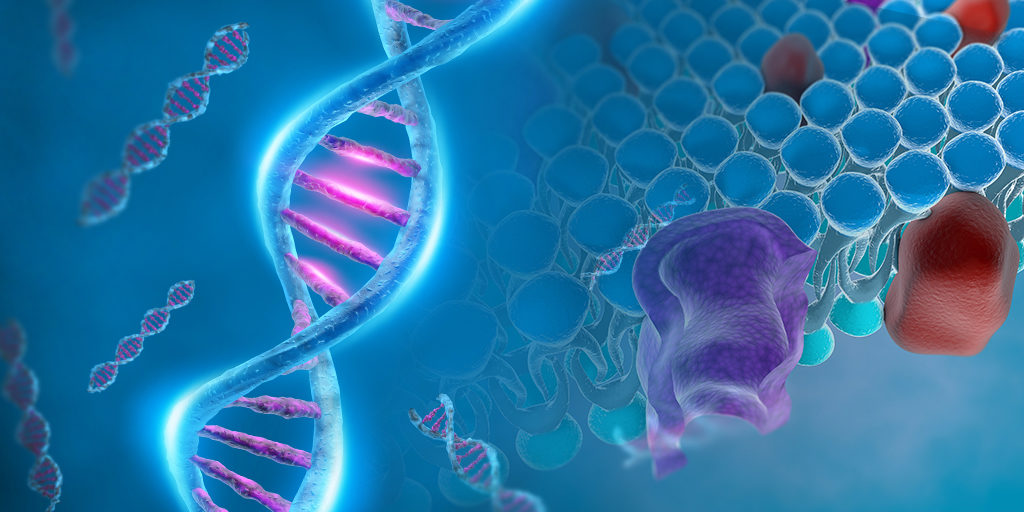A trend in modern scientific research over the past decade is using smaller & smaller methods of studying targets, like molecules. Independent, smaller devices, and less expensive methods allow more access for researchers across the board, regardless of their space and budget. One such analytical method is the creation of artificial nanopore sensors for research using nanopore electrochemistry.

Capturing reactions and structures of target analytes is made more accessible for researchers through nanotechnology, especially in biophysics and electrochemistry. Furthermore, in electrochemical research studies, nanopores act as single-molecule sensors, so when introduced to a cell membrane, they are able to detect single molecules! What’s great about these nanopores is they allow for label-free sensing of molecules. Let’s talk about why this is great compared to labeling samples and delve more into nanopore technology used in electrochemistry.
What is Nanopore Electrochemistry?
First of all, a nanopore is a pore, nano-sized (not super helpful). So, what is “nano-sized”? One nanometer equals one-billionth of a meter! Good luck seeing one with the human eye! Almost every living organism has pore-based structures in their cell membranes. These allow for transference of molecules in and out of the cell walls. When nanopores are present in an insulated cell membrane, they can physically sense single molecular bodies, as opposed to labelling them. Nanopores have been artificially constructed as sensors in electrochemical research to study molecular transport.
The use of nanopores in electrochemistry has its origins in the 1950’s, when scientists were curious to find a way to target and study single molecular structures. Finally, in the 90s, with the help of cheap, label-free methods for DNA collection made accessible, scientists were able to target single strands of DNA using nanopore technology.
Today, nanopore electrochemistry, or nanoelectrochemistry, is electroanalysis using nanopore electrodes. Nanoelectrochemistry is the micro-version of the field of electrochemistry. The ability to sense single entities with nanopore arrays and measure their size, structure, and reactions is worth its weight in gold for researchers today. Nanopore technology shows promising research possibilities, including DNA/RNA sequencing, drug research, and protein sequencing. This could prove especially useful for pathologists in the study of genome sequencing and related genetic diseases and disorders!
Applications
The ability to focus in on a single entity in a cell is incredibly promising for research involving the genome, DNA/RNA sequencing, protein folding and structure analysis, and so much more. Here we discuss example experiments which elaborate on preparation and methods for using nanopore technology.Preparation of a Single-Cell Nanopore in DNA Interactions
One such electrochemical experiment focused on the interaction between Spermidine and a single DNA strand. For this experiment, researchers designed an array of artificial nanopores to measure the results. The nanopore acts as an electrode, through which the interaction between the two could be quantified using differential pulse voltammetry.What is exciting about this is the fact that it is a label-free method. Instead of having to mark or “label” the DNA samples during experimentation (like fluorescence labeling, radiolabeling or isotope labeling), the process of using a nanopore instead involves physically measuring the dynamics and actions of molecules. Using an array of nanopore sensing electrodes can further speed up data collection from samples, as it quickens the ability to sense reactions. All of this is promising for breakthroughs in pathology and genome research!
Nanopore Sequencing of DNA and RNA
One of the most delicate yet vital areas of study is DNA/RNA sequencing and the mutations and disruptions which cause diseases and disorders. Furthermore, nanopore electrochemistry can be used to study the structure and processes of DNA/RNA in real time, using the smallest, single-strand samples and nanopore electrodes. Nanopore electrochemistry in this research involves using a nanopore array and passing nucleic acids through a protein nanopore. This allows researchers to decode the DNA/RNA sequence by measuring the electrical current that results from this action!
This not only gives precise information on the molecule being studied, but it also gives instant access to that information, unlike other traditional sequencing methods. Using nanopore technology is exciting with the potential it has to bring meaningful, reality-altering change to the future of genome research! It is cost-effective, label-free, and delivers lightning fast results in real time, and allows for analysis down to the single molecule level. What else could you ask for in the future of electrochemical research?
Your Ally in Discovery
At AG Scientific, we are proud to serve our customers and scientific community by offering the highest quality raw materials for breakthrough research. We source critical biochemical reagents including antibiotics, enzymes, buffers, and more, in addition to tailoring custom reagents to meet your needs.Additional Reading
- Ion Selective Electrodes (ISE): An Introduction
- Paper-Based Biosensors: Effective and Efficient
- Advances in Lab-on-a-Chip Technology
- Single-Use Biosensors for the Detection of Biomarkers
